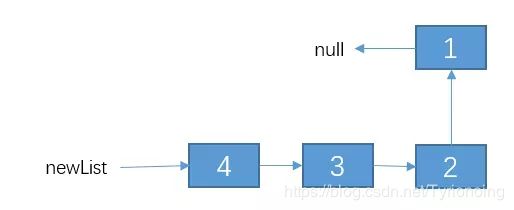2021秋招-算法-递归
算法-递归
教程:
⭐告别递归,谈谈我的一些经验
LeetCode刷题总结-递归篇
基础框架
leetcode刷题
1.leetcode-101. 对称二叉树-简单
101. 对称二叉树
给定一个二叉树,检查它是否是镜像对称的。
例如,二叉树 [1,2,2,3,4,4,3] 是对称的。
1
/ \
2 2
/ \ / \
3 4 4 3
但是下面这个 [1,2,2,null,3,null,3] 则不是镜像对称的:
1
/ \
2 2
\ \
3 3
# Definition for a binary tree node.
# class TreeNode:
# def __init__(self, x):
# self.val = x
# self.left = None
# self.right = None
class Solution:
def isMirror(self,t1,t2):
if not t1 and not t2:
return True
if not t1 or not t2:
return False
return t1.val == t2.val and self.isMirror(t1.right,t2.left) and self.isMirror(t1.left,t2.right)
def isSymmetric(self, root: TreeNode) -> bool:
# 递归算法
if not root:
return True
return self.isMirror(root.left,root.right)
'''
# 非递归: BFS判断当前层元素是否为对称
res = []
if not root:
return True
queue = [root]
row = 1
while queue:
line_res = []
queue_size = len(queue)
# 将当前队列元素向四周扩散
for i in range(queue_size):
curNode = queue.pop(0)
# 划重点: 判断是否到达终止
if curNode:
line_res.append(curNode.val)
queue.append(curNode.left)
queue.append(curNode.right)
else:
line_res.append('null')
# 判断当前层是否符合镜像二叉树要求
if len(line_res) % 2 != 0 and row != 1:
return False
back = line_res[::-1]
if line_res != back:
return False
row += 1
return True
'''
2.剑指 Offer 24. 反转链表-简单
剑指 Offer 24. 反转链表
定义一个函数,输入一个链表的头节点,反转该链表并输出反转后链表的头节点。
示例:
输入: 1->2->3->4->5->NULL
输出: 5->4->3->2->1->NULL
- python 递归方法:

# Definition for singly-linked list.
# class ListNode:
# def __init__(self, x):
# self.val = x
# self.next = None
class Solution:
def reverseList(self, head: ListNode) -> ListNode:
if head == None or head.next == None:
return head
# 递归子链表
# 下层递归返回值
cur = self.reverseList(head.next)
head.next.next = head
head.next = None
return cur
- python迭代方法:
# Definition for singly-linked list.
# class ListNode:
# def __init__(self, x):
# self.val = x
# self.next = None
class Solution:
def reverseList(self, head: ListNode) -> ListNode:
if not head:
return None
pHead = head
pTmp1 = head
# 下面两条顺序不能变化,否则就会报错;
pHead = pHead.next
pTmp1.next = None
while pHead:
# 原则: 两前1后指针
pTmp2 = pHead.next
pHead.next = pTmp1
pTmp1 = pHead
pHead = pTmp2
return pTmp1
3.leetcode-25. K 个一组翻转链表
25. K 个一组翻转链表难度困难639收藏分享切换为英文关注反馈给你一个链表,
每 k 个节点一组进行翻转,请你返回翻转后的链表。
k 是一个正整数,它的值小于或等于链表的长度。
如果节点总数不是 k 的整数倍,那么请将最后剩余的节点保持原有顺序。
示例:
给你这个链表:1->2->3->4->5
当 k = 2 时,应当返回: 2->1->4->3->5
当 k = 3 时,应当返回: 3->2->1->4->5
思路: 使用 递归的思路:
递归思维:k 个一组反转链表
![]()
python实现:
# Definition for singly-linked list.
# class ListNode:
# def __init__(self, x):
# self.val = x
# self.next = None
class Solution:
def reverseKGroup(self, head: ListNode, k: int) -> ListNode:
# 翻转区间[a, b) 的元素, 注意是 左闭右开。
def reverse(a, b):
pre = ListNode()
cur = a
nxt = a
# while终止条件变成 != b
while cur != b:
nxt = cur.next
cur.next = pre
pre = cur
cur = nxt
# 反转后的头节点
return pre
if not head:
return None
a = b = head
for i in range(k):
if not b:
return head
b = b.next
# 返回z反转后的头节点
newHead = reverse(a, b)
# a: 反转之前的头节点, 然后把 反转后的 下一次的头节点拼起来
a.next = self.reverseKGroup(b, k)
return newHead